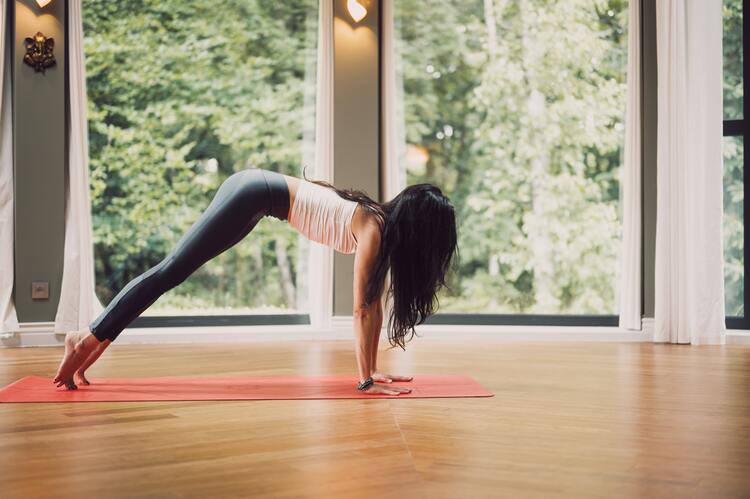MENU
OPEN SIDEBAR >
How To Get Started Practicing Yoga
It’s easier than you think!
You’ve heard everyone from your boss to your doctor, and maybe even your grandma, raving about the benefits of yoga. But if you’ve never tried it for yourself, getting started with yoga can feel intimidating. What kind of class should you take? What if you do the poses wrong? Will the other students be more advanced?
Everyone has similar concerns in the beginning, but they don’t need to hold you back. Use these tips to help you get started with practicing yoga; before long, the worries will fade and you’ll be reaping the benefits of the practice.
Practice at home with videos.
There are thousands of yoga videos available online, making it easier than ever to practice at home and at your convenience. Many different websites and apps sell yoga videos and programs, but you can find free videos of all styles and lengths on YouTube (some are just five or ten minutes!). Practicing along with videos at home is a great way to get started with yoga if you’re nervous about doing it in front of other people, or if your schedule makes it hard to get to classes.
Take an introductory workshop.
Many yoga studios offer Introduction to Yoga workshops or series, which are designed for total beginners. Workshops like these will explain the basics of yoga and break down poses in a way that regular classes don’t. Plus, they’ll usually have time for you to ask questions and talk about your specific goals or limitations. You can rest assured that the other people attending these workshops will also be new to yoga, so you won’t feel out of place.
Choose beginner-friendly class.
If you’re brand new to yoga, fast-paced vinyasa or power yoga classes will likely be overwhelming. Instead, look for styles like hatha, gentle yoga, and slow flow, as well as anything designed for beginners (some studios call these classes “Basics” or “Foundations”). Passive styles like yin and restorative are also suitable for people new to yoga, and they’re an important complement to more vigorous classes.
Try out different teachers and styles.
There are so many different types of yoga available, and each studio and teacher has their own style. To find what resonates most with you, try out as many teachers and styles as you can. Before you dive in, it’s worth doing a little research on the different types of yoga so you’ll know what to expect!
Don’t worry about other students.
The worry about what other students will think is often what makes people nervous about starting yoga. But regular practitioners come to yoga for themselves and their own practice, not to judge the newbies. Instead of worrying about what they’re doing, try to focus on yourself and how you feel during class.
Read about yogic philosophy.
Most people spend a long time doing asana (yoga poses) before they start thinking about the other aspects of yoga or the philosophy behind it. But learning about the history and philosophy of yoga from the beginning will help you understand how and why it works.
Do you want to know more about how you could benefit from starting a yoga practice? Sign up for your free health assessment today.



+ Show Comments
- HIDE COMMENTS